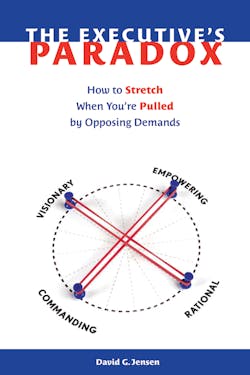Limited Resources, Numerous Priorities
A thread running through many of our stories, particularly our cover stories of transit agencies, is the transformative power of effective leadership. If only one could simply buy a book on leadership and follow the guidelines to success — there is certainly no shortage of these titles, or of renowned business leaders promoting their prescriptions. The challenge is finding advice that you are confident you can implement in your specific transit agency. Perhaps it has arrived ...
I talked recently with leadership consultant and author Dave Jensen (DaveJensenOnLeadership.com) after reading his intriguing new book, "The Executive’s Paradox: How to Stretch When You’re Pulled by Opposing Demands." The book addresses what so many transit and business leaders experience these days: limited resources to achieve numerous priorities that often pull them in opposite directions. Jensen began by explaining why he started studying transit executives and which "paradoxes" have the biggest impact on leaders.
He started his workforce development research on transit leaders when Mike Scanlon, CEO of SamTrans, invited him to speak at the American Public Transportation Association CEO Seminar four years ago. After interviewing dozens of agency leaders, he realized that many of their challenges pulled them in opposite direction at the same time. These included:
- Increase productivity/efficiency and meet diverse stakeholders' demands
- Achieve regional goals and focus on each city’s individual objectives
- Concentrate on today's To-Do list and make progress on long-term strategies
- Get MY work done and ttime to coach/mentor/motivate others
Jensen explained that because a paradox involves two issues that pull in opposite direction at the same time, they must be managed together. The biggest mistake leaders make is focusing on one issue at the expense of the other.
When I asked Jensen about practical tools that would help transit executives lead in today's paradoxical environment, he shared what he discovered about best practices.
Over the last four years, he studied 147 transit executives who were rated by 1,019 leaders using a 360 assessment (http://xlmassessment.com). He found the five competencies (best practices) that highly predict transit leader effectiveness are:
- Engage others
- Adapt strategies to meet goals
- Monitor closely
- Cultivate innovative growth
- Embrace ambiguity and paradox
The challenges are well known, and you probably have heard some of these terms before, but Jensen may change your way of thinking about them. Learn more about these transit best practices and how to use them to boost your success in next month’s column.
